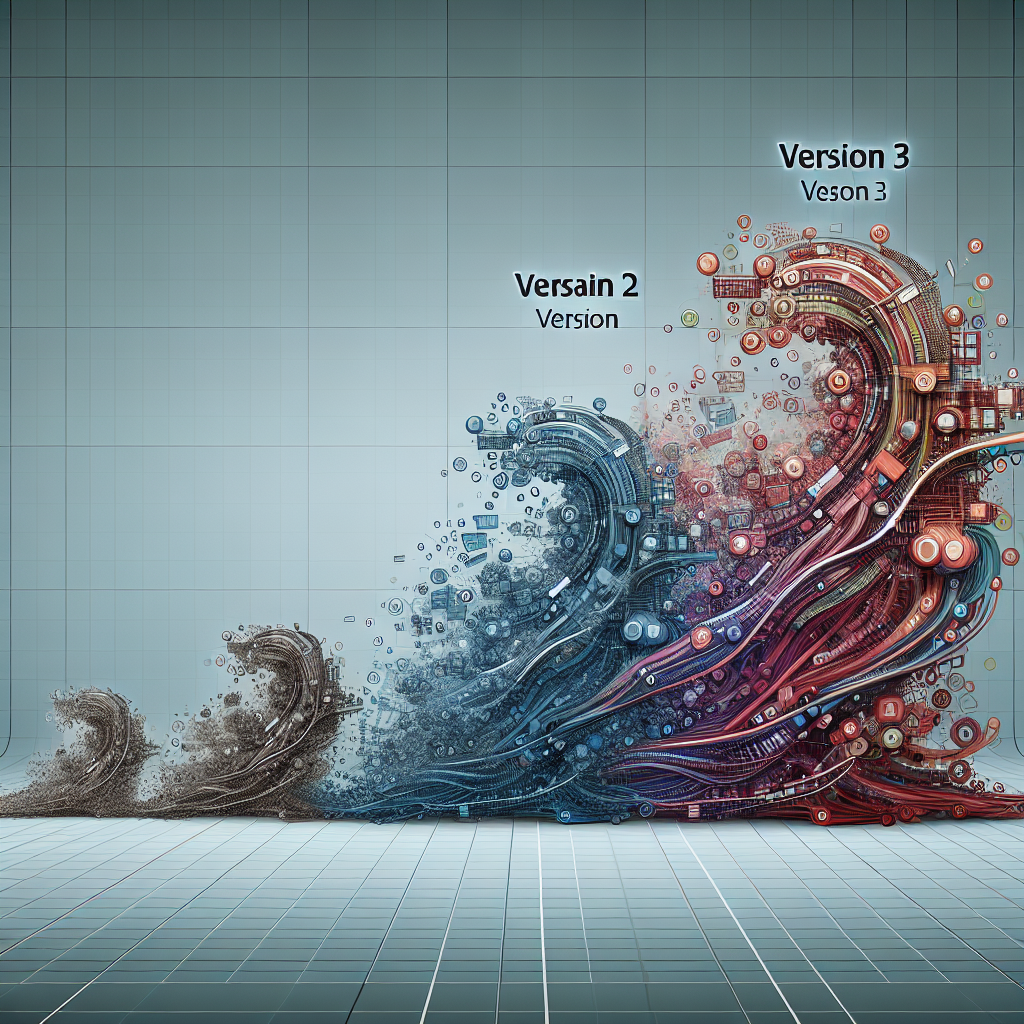Epic APIs Transition to USCDI Version 3

The healthcare industry is undergoing a significant transformation with the adoption of the United States Core Data for Interoperability (USCDI) Version 3. As a leading electronic health record (EHR) provider, Epic Systems is at the forefront of this transition, leveraging its APIs to enhance data interoperability and improve patient care. This article delves into the intricacies of Epic’s transition to USCDI Version 3, exploring its implications, challenges, and opportunities for healthcare providers and patients alike.
Understanding USCDI Version 3
USCDI Version 3 represents a critical step forward in the standardization of health data exchange in the United States. Developed by the Office of the National Coordinator for Health Information Technology (ONC), USCDI aims to establish a consistent set of health data classes and elements to facilitate seamless data sharing across different healthcare systems.
USCDI Version 3 builds upon its predecessors by expanding the scope of data elements and introducing new categories that reflect the evolving needs of the healthcare industry. Key additions include data elements related to social determinants of health, sexual orientation, and gender identity, among others. These enhancements are designed to provide a more comprehensive view of patient health and improve the quality of care delivered.
The transition to USCDI Version 3 is not merely a technical upgrade; it represents a paradigm shift in how healthcare data is managed and utilized. By standardizing data elements, USCDI Version 3 aims to break down silos and enable more effective data exchange between healthcare providers, payers, and patients.
- Expansion of data elements to include social determinants of health
- Introduction of new categories for sexual orientation and gender identity
- Improved data standardization for enhanced interoperability
For Epic Systems, aligning its APIs with USCDI Version 3 is a strategic move to ensure its EHR solutions remain at the cutting edge of healthcare technology. By adopting these standards, Epic aims to facilitate better data exchange, improve patient outcomes, and support the broader goals of healthcare interoperability.
The Role of Epic APIs in Healthcare Interoperability
Epic Systems has long been a leader in the EHR space, providing comprehensive solutions that enable healthcare providers to manage patient records efficiently. A key component of Epic’s success is its robust suite of APIs, which allow for seamless integration with other healthcare systems and applications.
APIs, or Application Programming Interfaces, are essential tools for enabling interoperability in healthcare. They provide a standardized way for different software systems to communicate and exchange data, breaking down barriers between disparate systems and facilitating a more connected healthcare ecosystem.
Epic’s APIs are designed to support a wide range of functionalities, from accessing patient records to integrating with third-party applications. By aligning its APIs with USCDI Version 3, Epic is enhancing its ability to support data exchange across different healthcare systems, ensuring that its solutions remain relevant and effective in an increasingly interconnected world.
- Seamless integration with third-party applications
- Support for a wide range of functionalities
- Enhanced data exchange capabilities
The transition to USCDI Version 3 presents both challenges and opportunities for Epic and its clients. On one hand, it requires significant technical adjustments to ensure compliance with the new standards. On the other hand, it opens up new possibilities for innovation and collaboration, enabling healthcare providers to deliver more personalized and effective care.
Challenges in Transitioning to USCDI Version 3
While the transition to USCDI Version 3 offers numerous benefits, it also presents several challenges for Epic and its clients. One of the primary challenges is the need to update existing systems and processes to align with the new data standards. This requires significant investment in terms of time, resources, and expertise.
For healthcare providers, the transition may involve reconfiguring their EHR systems, updating workflows, and training staff to ensure they are familiar with the new data elements and categories. This can be a complex and time-consuming process, particularly for large healthcare organizations with extensive IT infrastructures.
Another challenge is ensuring data accuracy and consistency across different systems. As healthcare providers adopt USCDI Version 3, they must ensure that their data is accurately mapped to the new standards, which can be a complex task given the diversity of data sources and formats.
- Updating existing systems and processes
- Reconfiguring EHR systems and workflows
- Ensuring data accuracy and consistency
Despite these challenges, the transition to USCDI Version 3 is a necessary step towards achieving true interoperability in healthcare. By overcoming these hurdles, Epic and its clients can unlock the full potential of their EHR systems, enabling more effective data exchange and improved patient care.
Opportunities for Innovation and Collaboration
The transition to USCDI Version 3 presents significant opportunities for innovation and collaboration in the healthcare industry. By standardizing data elements and facilitating seamless data exchange, USCDI Version 3 enables healthcare providers to leverage new technologies and approaches to improve patient care.
One of the key opportunities is the ability to harness the power of data analytics and artificial intelligence (AI) to gain deeper insights into patient health. With access to standardized and comprehensive data, healthcare providers can develop predictive models and personalized treatment plans that improve patient outcomes and reduce costs.
Additionally, USCDI Version 3 opens up new possibilities for collaboration between healthcare providers, payers, and technology vendors. By enabling more effective data exchange, it facilitates the development of integrated care models that improve coordination and communication across the healthcare continuum.
- Leveraging data analytics and AI for improved insights
- Developing predictive models and personalized treatment plans
- Facilitating integrated care models and improved coordination
For Epic, the transition to USCDI Version 3 is an opportunity to enhance its EHR solutions and expand its ecosystem of partners and collaborators. By aligning its APIs with the new standards, Epic can support a wider range of use cases and applications, driving innovation and improving patient care.
Case Studies: Successful Implementations of USCDI Version 3
Several healthcare organizations have already begun the transition to USCDI Version 3, leveraging Epic’s APIs to enhance data interoperability and improve patient care. These case studies provide valuable insights into the benefits and challenges of adopting the new standards.
One notable example is a large healthcare system in the Midwest that successfully implemented USCDI Version 3 across its network of hospitals and clinics. By aligning its EHR systems with the new standards, the organization was able to improve data exchange with external partners, enhance care coordination, and reduce administrative burdens.
Another case study involves a regional health information exchange (HIE) that adopted USCDI Version 3 to facilitate data sharing between its member organizations. By standardizing data elements and leveraging Epic’s APIs, the HIE was able to improve data accuracy and consistency, enabling more effective population health management and care coordination.
- Improved data exchange and care coordination
- Enhanced population health management
- Reduced administrative burdens
These case studies highlight the potential of USCDI Version 3 to transform healthcare delivery and improve patient outcomes. By adopting the new standards and leveraging Epic’s APIs, healthcare organizations can unlock the full potential of their EHR systems and drive innovation in patient care.
Conclusion
The transition to USCDI Version 3 represents a significant milestone in the journey towards healthcare interoperability. For Epic Systems and its clients, aligning with the new standards is both a challenge and an opportunity to enhance data exchange, improve patient care, and drive innovation in the healthcare industry.
By understanding the implications of USCDI Version 3 and leveraging Epic’s APIs, healthcare providers can overcome the challenges of the transition and unlock new possibilities for collaboration and innovation. As the healthcare industry continues to evolve, the adoption of standardized data elements and seamless data exchange will be critical to delivering high-quality, patient-centered care.
In summary, the transition to USCDI Version 3 is a crucial step towards achieving true interoperability in healthcare. By embracing the new standards and leveraging the power of Epic’s APIs, healthcare organizations can improve data exchange, enhance patient care, and drive innovation in the industry.





